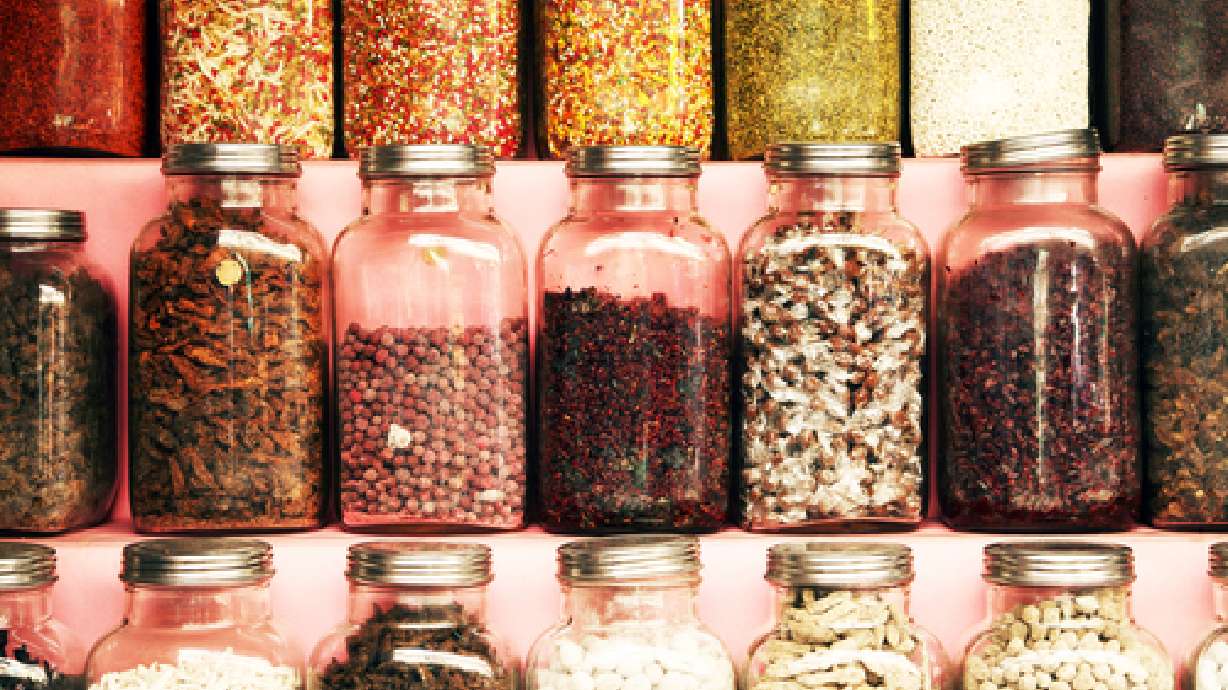Estimated read time: 5-6 minutes
This archived news story is available only for your personal, non-commercial use. Information in the story may be outdated or superseded by additional information. Reading or replaying the story in its archived form does not constitute a republication of the story.
SAVING SEEDS
Seeds are saved for many reasons. Some gardeners save seed to save money. Another reason to save seeds is to preserve varieties you particularly like, as seed companies sometimes eliminate varieties. Heirloom seeds are saved. Some families hand down seeds from one generation to the next as they might jewelry or glassware. By saving seeds, we maintain diversity in the foods we eat and in the beauty of our surroundings.
We can select for desirable plant characteristics or to develop new cultivars. Growing plants, harvesting and storing seeds, and growing new plants from those seeds provides a sense of continuity and renewal.
SEED HARVEST
• Always select seed from the healthiest and most desirable plants.
• On plants you normally deadhead, set aside a few blossoms for later seed collection.
• If seedpods are growing along a stalk, harvest from the bottom up. If this is too time consuming, harvest entire stalk when most pods are mature.
• Only mature seeds should be collected. If seeds aren't mature they will not germinate. Signs of maturity: Brown and dry. Petals have dropped from flower heads. Seed pod formation.
• Seed can be collected about the same time each year for the same plants.
• Harvest when seeds are mature but before seeds disperse or are eaten by birds or other animals. You can put paper or cloth (not plastic) bags around pods if they are close to bursting.
• Biennials should be mulched the first winter and seed collected the second season.
• Flowers fall into several categories for seed harvest: Pod Bursters -- These explode when dry, throwing their seed out. Collect early and allow to dry in a bag or other container. Pod bursters include violets, sweet peas, lupines, California poppies, pansies, asters, anemones, everlastings.
Seed Spillers -- Pods ripen gradually from the bottom along a stalk. As they dry they begin to open gradually, spilling seed. Seed spillers include foxgloves, Salpiglossis, petunias, nicotiana, mimulus, cosmos, annual chrysanthemum, Shasta daisy, coreopsis, dahlia, calendula and gaillardia.
Seed Holders -- Pods open gradually but hold most seeds if left undisturbed. Collect whole stalks when partly dry and shake out seeds. Seed holders include columbines, snapdragons, most poppies (Oriental, Iceland, Shirley, Flanders), delphinium and annual larkspur, evening primrose, marigold, dianthus, hollyhock, lilies and iris.
Closed Pods or Heads -- When dry, these pods shatter in the garden. Cut stalks when most of pods are brown. Dry until crisp. Then rub or beat until most of pods have broken up. They include sweet allysum, stocks, wallflowers, lunaria, zinnias, sunflowers, Gloriosa daisies and other rudbeckias, morning glory, penstemon, bachelor buttons and godetias (clarkias).
CLEANING AND DRYING
Seeds may need to be cleaned, especially if collected from fleshy fruit. Remove pulp. Lay out seed to dry, out of the sun, for about 5-7 days.
SEED STORAGE
Store seeds in dry, cool and dark conditions. Moisture, heat and light are potential enemies causing seed to germinate, sprout or rot.
Use moisture-proof, airtight containers such as jars, foil or waxed packages. Label containers carefully with variety and date. Most annual seeds, both vegetables and flowers, will remain viable for two to three years if stored properly. Seeds of many woody plants need to be refrigerated or planted in the fall. Seeds of some plants don't keep well and need to be sown soon. Check reference sources for details.
SEEDS THAT SHOULD BE SOWN AS SOON AS POSSIBLE
(They are not long lived and should not be stored.) Angelica' Archangelica Angelica
Anthurium species Flamingo Flower
Asparagus species Asparagus Fern, Smilax
Chrysanthemum coccineum Pyrethrum, Painted Daisy
Clivia Belgian hybrids Kaffir Lily
Corynocarpus laevigata New Zealand Laurel
Delphinium species Delphinium
Dimorphoteca sinuata Cape Marigold
Franklinia alatamaha Franklin Tree
Geranium sanguineum Cranesbill
Gerbera Jamesonii hybrids Transvaal Daisy
Ginkgo biloba Maidenhair Tree
Iris species
Kochia scoparia Burning Bush
Lilium regale Royal Lily
Livistona chinensis Chinese Fan Palm
Magnolia grandiflora Southern Magnolia
Monstera deliciosa Cut Leaf Philodendron
Passiflora species Passion Flower, Purple Granadilla
Philodendron species
Potentilla nepalensis cinquefoil
Salvia splendens Scarlet Sage
Sophora japonica Japanese Pagoda Tree
Strelitzia reginae Bird Of Paradise
SPECIAL SEED TREATMENTS AND TERMS
Self-pollination: Fusion of gametes (male half is sperm, female half is ovule) from the same flower or different flowers on the same individual plant.
Cross-pollination: Flowers of plants pollinate flowers of other plants via wind or insects.
Open-pollination: Any non-hybrid variety.
Hybrids: Hybrids result from crossing between different varieties. The first generation results from a cross of inbred lines. Seeds from a hybrid will not usually produce plants that resemble the hybrid.
Varieties: Naturally occurring selections within a species.
Cultivars: Selections resulting from human intervention. Scarification: Seed coats may be so hard that they are impermeable to water. They need to be scratched or broken using a knife, file, sandpaper, etc. in order to germinate.
Soaking: Softens seed coat and can leach out chemical inhibitors that prevent germination. Soaking usually speeds germination. Twenty-four hours is normally sufficient. Use warm or hot water, not boiling. Don't allow seeds to dry out before planting.
Stratification: Cold treatment is necessary for some seeds to germinate. The length of time of cold treatment varies with seed type. Seed should be mixed with a moist medium such as sand, peat moss, etc. and put into a plastic bag into a refrigerator. When chilling is complete, plant seed with medium.
Seed Dormancy: When only one treatment is necessary, such as stratification, it is called simple dormancy. Some seeds need cold stratification followed by warm treatment. This is called double dormancy.








